1. Basic Problems of Smart Street Light System
At present, the electricity consumption for lighting in the world accounts for about 20% of the total power generation, while outdoor road lighting accounts for about 30% of the total electricity consumption for lighting. The traditional street lamp energy-saving system has problems such as low level of intelligence, poor communication stability, and waste of lighting resources, and is still dominated by low-efficiency lighting. The energy utilization rate of street lamps in major cities is generally not high, making the electricity and management costs of street lamps a huge financial expenditure for the government.
In the development of energy-saving technology for lighting systems, lighting energy-saving technology is mainly to promote green lighting, use new light source materials, improve the performance of power devices and establish a sound and effective mechanism. At present, traditional energy-saving methods are mainly artificial energy-saving methods such as manual control energy saving, time control energy saving and light control energy saving, combined with light source energy saving methods.
The traditional street lighting system is to install timing equipment in the distribution box, automatically turn on and off the street lights according to the predetermined time, and turn off the lights and turn on the lights without considering whether there are pedestrians on the scene. When the season changes or the weather is abnormal, the street lights must be manually operated one by one. This simple control method is seriously inflexible and will cause a huge waste of energy. During the operation and maintenance of street lamps, huge labor and time costs are required, and it is impossible to monitor the operation status and collect operation data in real time.
With the development of modern science and technology, the comprehensive application of multi-field technologies and the integration of multi-systems, newer energy-saving control technologies and communication technologies have begun to enter the field of street lighting, gradually solving the problems of traditional street lighting control systems.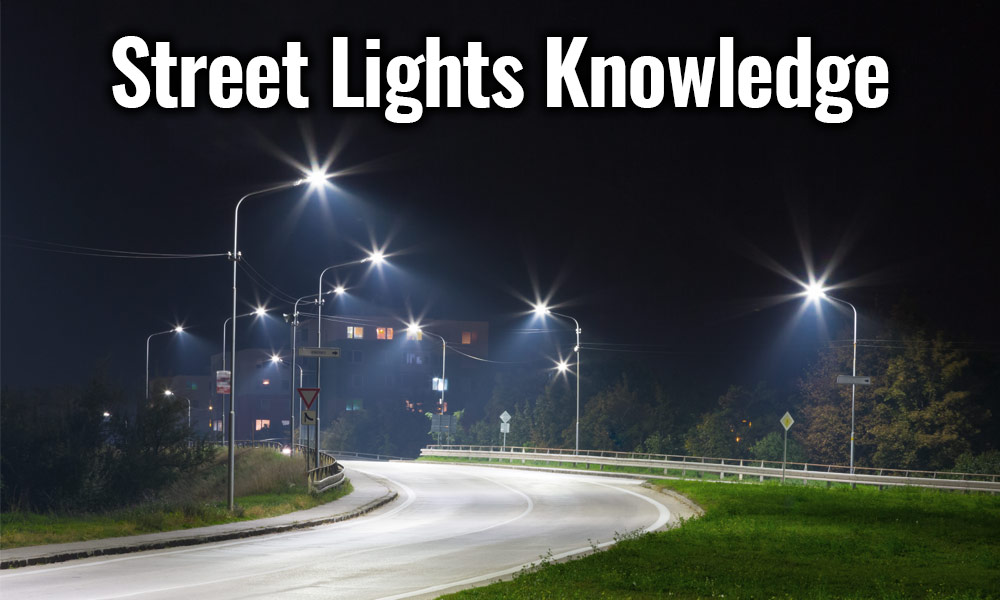
2. Research on Rnergy-saving Control Technology for Intelligent Street Light System
In recent years, scholars and technicians have made many achievements in the research direction of energy-saving control technology of intelligent street lamp system, which are mainly concentrated in two aspects. One is time control and light control technology, that is, through the use of time, space and illuminance requirements of road lighting and the feedback of collected information, intelligent technologies such as new fuzzy control algorithms and PID control strategies are used to realize the control of street lamp voltage and illuminance. Dynamic intelligent management makes the input power of street lamps and illumination requirements achieve the best match, so as to achieve the purpose of energy saving. The second is the energy conversion efficiency control technology, that is, by improving the energy conversion efficiency, the utilization rate of energy is maximized and the energy loss is reduced.
2.1 Research on Intelligent Illumination Control
In order to realize the automatic adjustment of the light source, so that the brightness of the street lamp can be adjusted in real time according to the on-site brightness, so as to achieve the purpose of saving energy, the R&D personnel introduced the PID control strategy into the street lamp control system. The PID controller completes the automatic adjustment of the light source within 80 ms, and the steady-state error is less than 1%. Because of the nonlinear and time-varying starting process of street lamps, the control effect of PID controller is limited.
The sensor collects the audio signals sent by road vehicles and pedestrians, and sends the control signal to the power conversion unit after being processed by the fuzzy controller, so as to realize the adjustment of the terminal voltage of the street lamp and achieve the requirement of outputting suitable brightness. 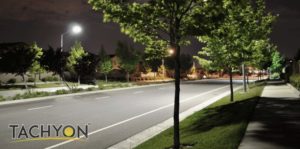
Fuzzy control has three linguistic variables: noise input variable deviation E, noise deviation change rate EC and input control quantity U. The noise input variable deviation is divided into five grades: large (PB), large (PS), medium (Z), small (NS) and small (NB), which represent the overall situation of on-site noise. The noise deviation rate of change is also divided into five cases: strong rate of change (PB), strong rate of change (PS), medium rate of change (Z), weak rate of change (NS) and weak rate of change (NB). With the above assumptions as the premise and the introduction of the control factor , the control rules can be obtained:
U={αE+(1-α)EC},α∈[0,1]
where α is a weighting factor. By adjusting the value of α, the weighting degree of the deviation E and the deviation change rate EC to the control input quantity U can be changed, so as to adjust the control rule. In order to ensure that the selected α value is reasonable, multiple adjustment factors that may exist are optimized, and the ITAE integral performance index is used:
ITAE=∫0+∞t|e(t)|dt
As the objective function, the value of the weighting coefficient α is determined, and the fuzzy control table is obtained.
Considering that the fuzzy control process is not sensitive to the shape of the membership function of the linguistic variable, but has a certain sensitivity to the range of the membership function, the triangular membership function is adopted: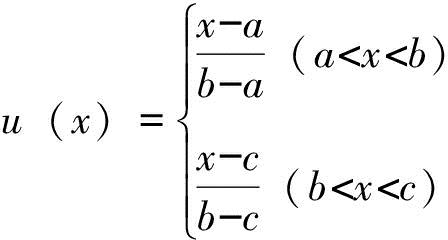
At the same time, the policy set G of the fuzzy target is the membership function uG of the reduced voltage to 22V. The fuzzy constraint strategy set C is the membership function uc of each step-down interval to a certain step-down starting point.
The engineers adopted the same fuzzy subset setting and improved the membership function, and carried out simulation and experimental research on the fuzzy controller of the intelligent street light control system.
2.2 Research on optimal efficiency control
Engineers have developed an intelligent solar street light controller that uses solar energy as an energy source to maximize energy savings. At the same time, the algorithm design of the following three parts is carried out: the maximum power tracking algorithm of the solar cell, the charging algorithm of the three-stage battery, and the battery remaining capacity detection model to estimate the remaining capacity of the battery. By means of improving the power factor, the power output efficiency of the solar battery is further improved.
Other engineers further use the voltage and reactive power optimization technology, combined with the characteristics of the street lamp power supply network and the electrical characteristics of high-pressure sodium lamps, with the goal of improving the power factor of the grid, reducing the network voltage drop, and reducing the energy consumption of street lamps. At the same time, the loss of lines and transformers is reduced, and the lighting fixtures are effectively protected. It overcomes the characteristics of single means, poor reliability and low automation of the traditional street lamp energy-saving system, and achieves certain energy-saving and management benefits.
3. Research on Communication Technology for Smart Street Lights
The communication technologies that can be used for smart street lamps mainly include optical fiber communication, field bus communication, power line carrier communication, general packet wireless service technology and wireless radio frequency communication.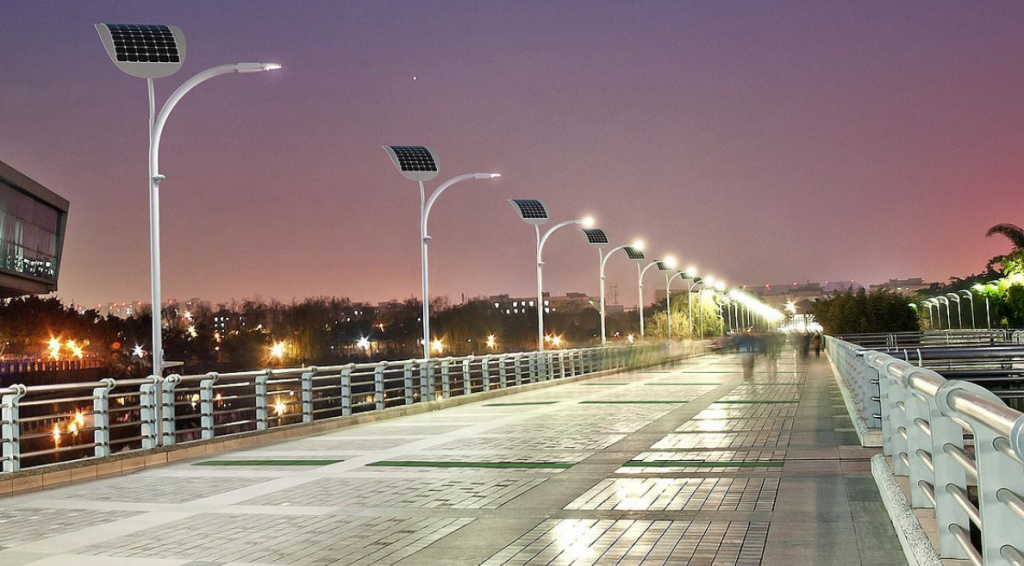
Optical fiber communication is a communication method that uses light waves to transmit information in optical fibers. The advantages of optical communication are fast speed, long distance, good confidentiality and strong anti-interference ability. The disadvantage is that the cost is too high, especially for a large number of street lights, it is difficult to spread out in a large area.
Fieldbus refers to a digital, serial, multipoint communication data bus between field devices installed in manufacturing or process areas and automatic devices in the control room. The advantages of field bus are low cost, flexibility and convenience. The disadvantage is that the original certainty of the control system is destroyed by the delay and packet loss of data packet transmission, which makes the analysis and synthesis of the system more complicated and affects the performance.
Power line carrier communication is a communication in which the transmission line is the transmission medium of the carrier signal. The advantage of power line carrier communication is to use the existing power transmission and distribution equipment as a communication line, saving a lot of line laying costs. The disadvantage is that the signal itself is easily interfered by the alternating current on the power line and the noise of the load equipment, resulting in information distortion and poor reliability.
General Packet Radio Service technology is a mobile data service available to GSM mobile phone users. The advantage of general packet radio service technology is that it can adapt to various complex geographical conditions and can be used for large-scale information transmission. The disadvantage is the hidden danger of information security brought by the open communication method, and when there are many nodes, higher communication costs will be incurred.
Radio frequency communication is a technical means of using electromagnetic waves of a specific frequency for communication to achieve non-contact two-way data transmission. 
The advantages of wireless radio frequency communication are low power consumption and low cost. The disadvantage is that the data transmission speed is low and it is susceptible to electromagnetic interference.
3.1 Communication scheme of intelligent street light system based on ZigBee technology
As a representative of wireless radio frequency communication technology, ZigBee technology has the huge advantages of low power consumption and low cost in the case of relatively close distance and small amount of data transmitted. GPRS technology has a long transmission distance, but the cost is high when used in large quantities, and it is mainly used to solve large-scale communication problems. The combination of the two takes into account cost and function.
The engineer combined ZigBee technology and GPRS technology, introduced the communication loop of the street light control system, and designed a three-level intelligent street light control system. The system is divided into terminal layer, master node layer and server layer.
The terminal layer is the street lamp. The street lamp is connected to other street lamps and the main node layer equipment through ZigBee technology. The status of each street lamp can realize real-time control and information feedback.
The main node layer is mainly the main control box that summarizes and relays information. The main control box uses two communication technologies to solve different communication distance problems. The street lights at the terminal layer with a short distance use ZigBee technology to communicate with the server layer with a long distance. The monitoring center adopts GPRS technology for information transmission.
The server layer includes the monitoring center and the mobile maintenance vehicle. The monitoring center is responsible for issuing the control commands of the street lights and processing the feedback information of the street lights. The mobile maintenance vehicle maintains the problematic street lights through the data from the monitoring center, and feeds back the maintenance information. GPRS technology is used for communication, mainly because the distance between the monitoring center and the mobile maintenance vehicle is relatively long and difficult to control.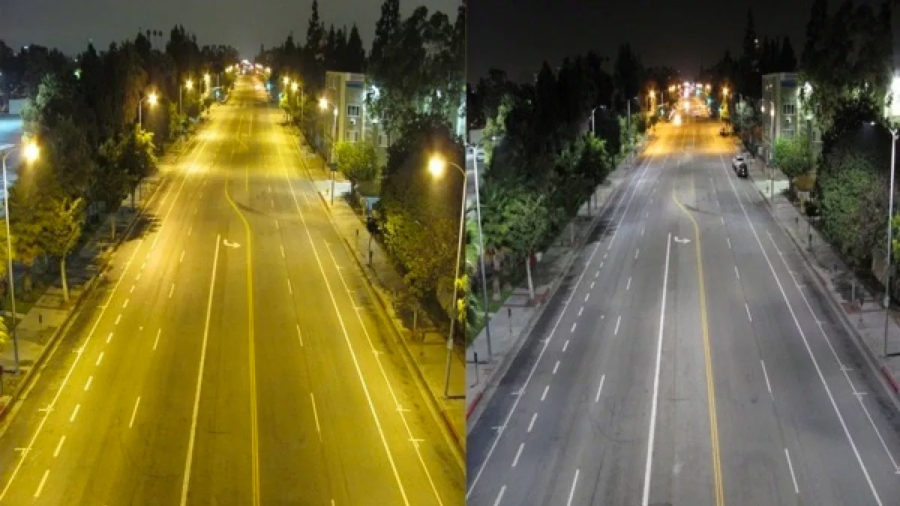
3.2 Communication scheme of intelligent street light system based on power line carrier communication technology
The researchers chose the power line carrier communication technology to replace the ZigBee network for short-range data transmission. The LonTalk protocol guarantees the feasibility of communication. This technology is mature, and the power carrier communication has considerable stability and convenience during the installation process.
However, in the above design scheme, the noise interference generated by the power line has not been well solved, especially the more complex street lamp connection system, which causes the collection of noise, which is a problem that must be solved in the future using the power line carrier communication technology.








